DDMWorks Upgraded Brake Rotors, Set of 3, for Polaris Slingshot
$449.00 – $725.00
Front and Rear Brake Rotor upgrade for Polaris Slingshot …
FITS: Polaris Slingshot
Description
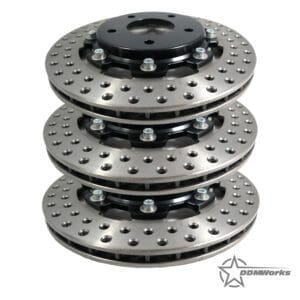
DDMWorks two-piece rotors are made to outperform and outlast the stock Slingshot parts. The two-piece brake rotors consist of custom designed and manufactured aluminum hats that are CNC machined from billet 6061 Aluminum. Those custom hats are then anodized black for long lasting protection and great looks. The rotor hat and rotor are then secured together with bolts stronger than grade 8 that have a minimum tensile strength of 170,000 psi! All the nuts and bolts come zinc plated to keep them looking great for many miles and years to come. Since this complete set are the same size as stock rotors, the factory balance of your brake system will also be maintained.
The kit consists of 3 complete brake rotors that come pre-assembled and ready to be installed, enough for your entire Slingshot. All rotor sets can be ordered in 3 different patterns – Cross Drilled, Slotted or standard vented.
Advantages:
- Lighter rotor – Stock rotors weigh 11.4 pounds, that weight is reduced by 15% with our 2 piece vented or slotted rotors to 9.7 pounds or an amazing 25% lighter with the cross drilled rotors of only 8.5 pounds.
- Cooler running brake rotors – The aluminum hats on our kit have a higher rate of heat dissipation compared to the stock cast iron pieces.
- Premium Grade alloys – The specially designed materials and computer aided design offer superb thermal shock stability, the cast blanks are machined and blanchard ground to assure precise flatness.
- Great looks – The two-piece design will set your Slingshot apart from the others and look great behind the wheels!
Proper Break-In Procedure for Cast Iron Rotors
New steel/iron rotors should be bedded in before being used on the street or in racing conditions. Proper bedding will prepare the rotor surface, prolong the rotor’s life, and make it more resistant to thermal checking or cracking under severe braking conditions. The following procedures should be performed when bedding in brake rotors. It is best to bed in a new rotor using a used set of pads, preferably ones which will not create heat rapidly (the stock slingshot brake pads work well for this). Generating heat too rapidly will thermal shock the rotors.
Make sure rotor surfaces are free from oils, grease, and brake fluid. Run vehicle up to a moderate speed (around 30-35mph) and make several medium deceleration stops to heat up the rotor slowly. While doing this, make sure not to come to a complete stop, keep the vehicle moving. Then proceed to make 2-3 stops from 55-60mph with a medium declaration. The goal is to bring the rotors up to temperature smoothly without spiking the temperature in them. This will help reduce the chance of thermal shock caused by uneven heating of the rotor. Once you get the rotors hot, you want to park the vehicle and allow the rotor to cool to ambient air temperature, usually 45-60 minutes. After bedding the rotors, you can then swap out your brake pads to upgraded pads and repeat the process for the pads.
Instructions
Proper Break-In Procedure for Cast Iron Rotors
New steel/iron rotors should be bedded in before being used on the street or in racing conditions. Proper bedding will prepare the rotor surface, prolong the rotor’s life, and make it more resistant to thermal checking or cracking under severe braking conditions. The following procedures should be performed when bedding in brake rotors. It is best to bed in a new rotor using a used set of pads, preferably ones which will not create heat rapidly (the stock slingshot brake pads work well for this). Generating heat too rapidly will thermal shock the rotors.
Make sure rotor surfaces are free from oils, grease, and brake fluid. Run vehicle up to a moderate speed (around 30-35mph) and make several medium deceleration stops to heat up the rotor slowly. While doing this, make sure not to come to a complete stop, keep the vehicle moving. Then proceed to make 2-3 stops from 55-60mph with a medium declaration. The goal is to bring the rotors up to temperature smoothly without spiking the temperature in them. This will help reduce the chance of thermal shock caused by uneven heating of the rotor. Once you get the rotors hot, you want to park the vehicle and allow the rotor to cool to ambient air temperature, usually 45-60 minutes. After bedding the rotors, you can then swap out your brake pads to upgraded pads and repeat the process for the pads.
Only logged in customers who have purchased this product may leave a review.
Related products
-
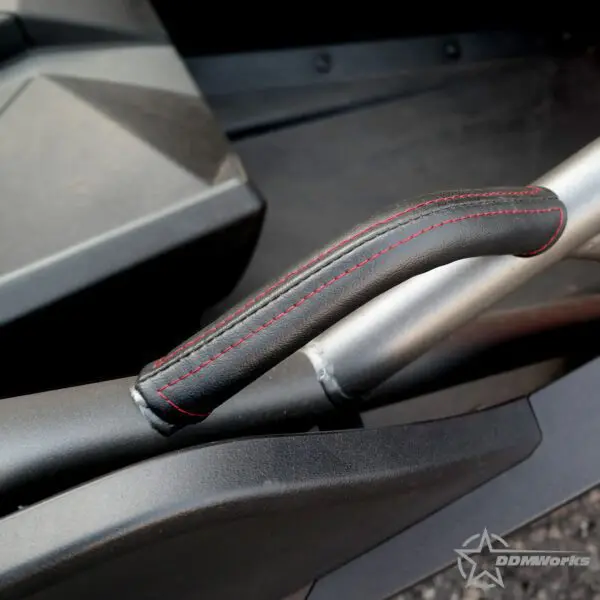
DDMWorks Upholstered and Padded Grab Handle for Polaris Slingshot
$89.00 – $109.00 Select options This product has multiple variants. The options may be chosen on the product page -
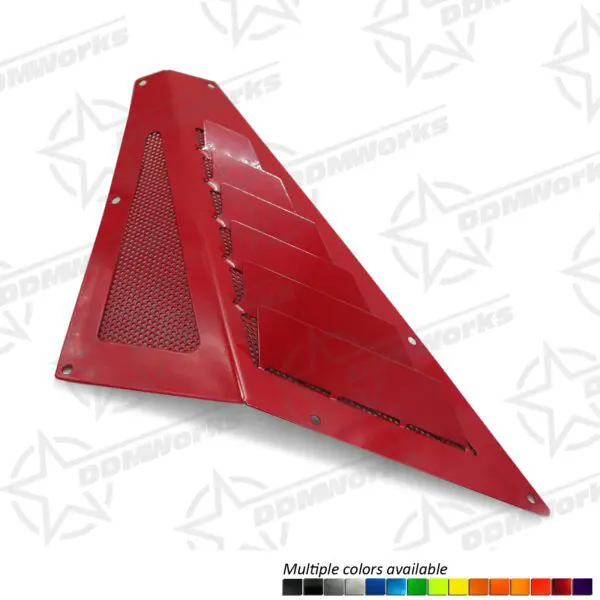
Polaris Slingshot Side Hood Vents, Louvered by DDMWorks
$229.00 Select options This product has multiple variants. The options may be chosen on the product page -
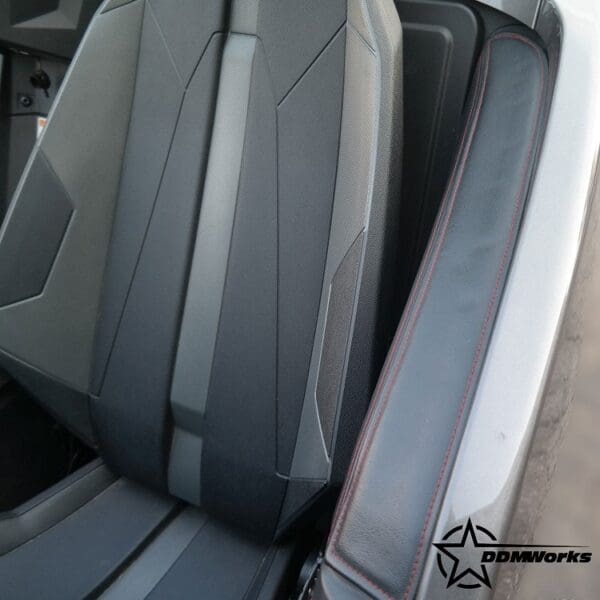
DDMWorks Upholstered and Padded Arm Rest for Polaris Slingshot
$195.00 – $215.00 Select options This product has multiple variants. The options may be chosen on the product page







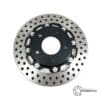
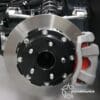
Reviews
There are no reviews yet.